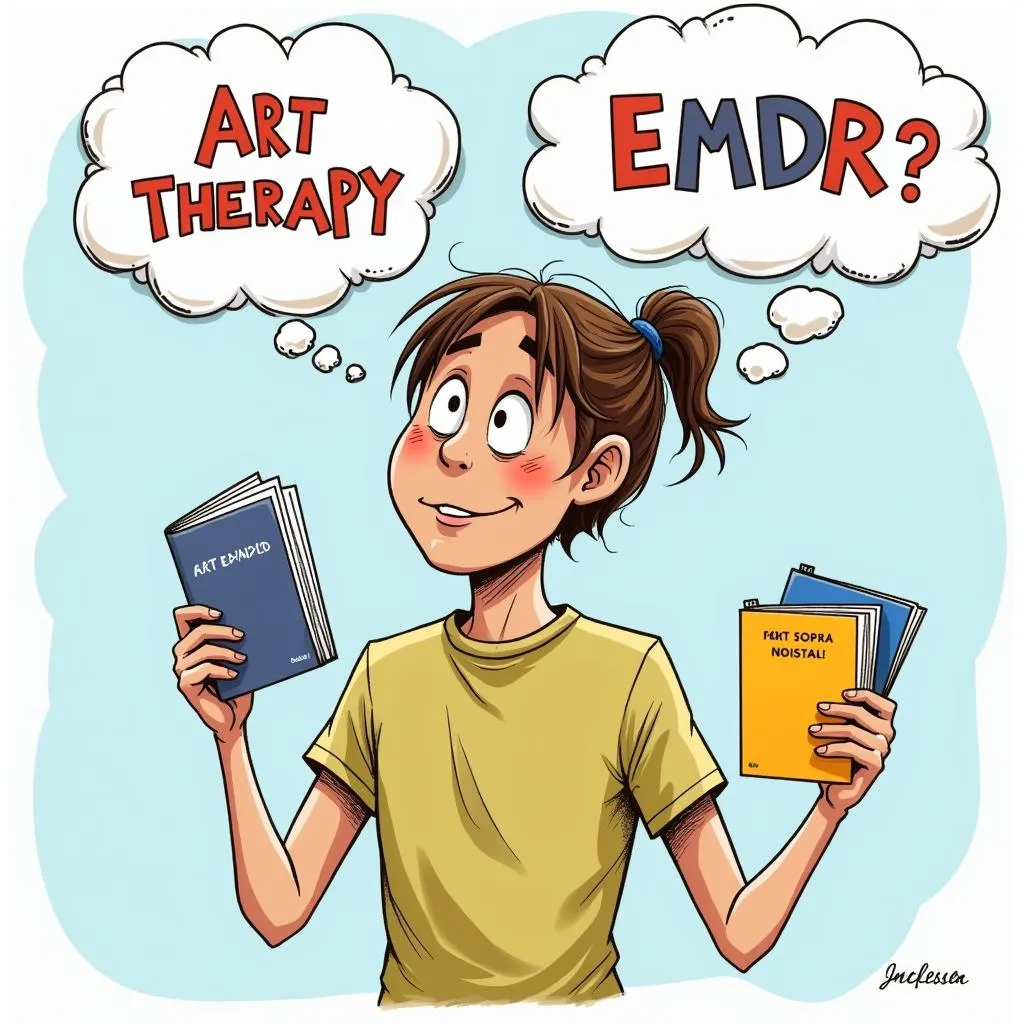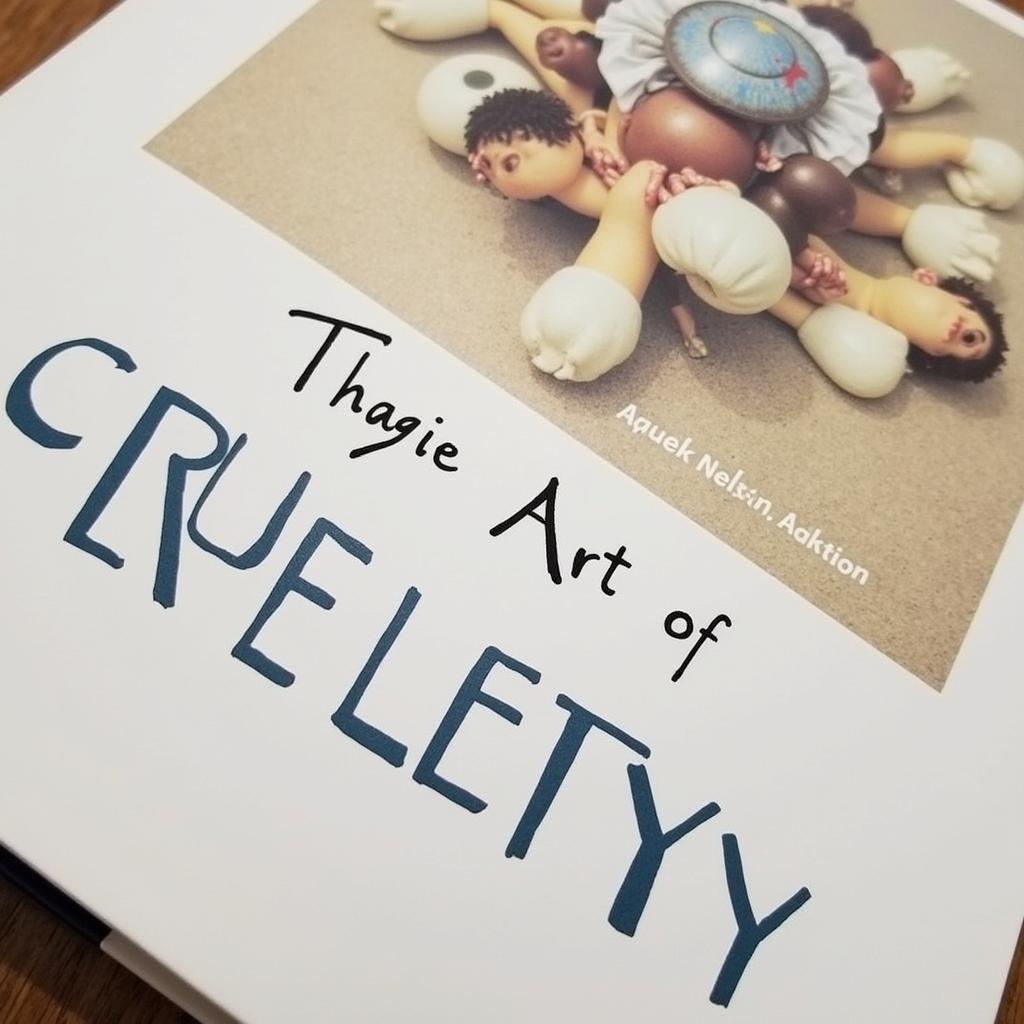Art Therapy vs EMDR: Unveiling the Power of Creative Healing and Reprocessing Trauma
Art therapy and EMDR (Eye Movement Desensitization and Reprocessing) stand as distinct yet powerful approaches to healing emotional distress and trauma. While both aim to alleviate suffering and foster well-being, they employ contrasting methods and tap into different aspects of our inner world. Understanding the nuances of each approach empowers individuals to make informed decisions about their therapeutic journey.
 Art Therapy Session with Watercolor
Art Therapy Session with Watercolor
Exploring the Creative Realm of Art Therapy
Art therapy, as the name suggests, harnesses the inherent therapeutic potential of artistic expression. This form of therapy provides a safe and non-judgmental space for individuals to communicate and process emotions, reduce stress, and enhance self-awareness through visual art mediums.
Unlike traditional talk therapy, art therapy transcends verbal limitations, allowing individuals to access and express emotions that may be challenging to articulate through words alone. The act of creating art serves as a conduit for unconscious thoughts, feelings, and memories to emerge, facilitating emotional release and personal insights.
 EMDR Therapy Session
EMDR Therapy Session
Delving into the Science of EMDR
EMDR, on the other hand, is a psychotherapy approach rooted in neuroscience. Developed by Dr. Francine Shapiro, EMDR posits that unprocessed traumatic memories are stored in the brain in a dysfunctional manner, contributing to ongoing emotional distress and psychological symptoms.
During an EMDR session, a trained therapist guides the individual through a structured protocol involving bilateral stimulation, typically through eye movements, taps, or sounds. This bilateral stimulation is believed to facilitate the brain’s natural information processing system, allowing for the reprocessing and integration of traumatic memories.
Key Differences: Art Therapy vs EMDR
While both art therapy and EMDR offer valuable therapeutic benefits, several key distinctions set them apart:
- Focus: Art therapy emphasizes emotional expression and self-exploration through art, while EMDR targets the reprocessing of specific traumatic memories.
- Methods: Art therapy utilizes various art materials and creative processes, while EMDR employs structured protocols involving bilateral stimulation.
- Verbal Expression: Art therapy often involves limited verbal communication, relying primarily on non-verbal expression, whereas EMDR incorporates verbal processing of traumatic memories.
 Choosing Between Art Therapy and EMDR
Choosing Between Art Therapy and EMDR
Finding the Right Fit: Which Therapy is Right for You?
The choice between art therapy and EMDR ultimately depends on individual needs, preferences, and therapeutic goals.
Art therapy might be particularly beneficial for individuals who:
- Struggle to express themselves verbally.
- Find solace and healing through creative expression.
- Seek a deeper understanding of their inner world.
- Want to explore a range of emotional experiences, not just trauma.
EMDR might be a suitable approach for individuals who:
- Have experienced a specific traumatic event.
- Experience ongoing distress related to past trauma.
- Seek a structured and goal-oriented therapy approach.
Conclusion: Embracing the Power of Healing
Both art therapy and EMDR offer transformative pathways to healing and well-being. By understanding the unique strengths and applications of each approach, individuals can make empowered decisions about their therapeutic journey and embark on a path towards greater emotional freedom and resilience.
Need support in navigating your mental health? Contact us at Phone Number: 02462573573, Email: [email protected] or visit us at Savico Megamall, 7-9 Đ. Nguyễn Văn Linh, Gia Thụy, Long Biên, Hà Nội 10000, Việt Nam. Our dedicated team is available 24/7 to provide compassionate support.



